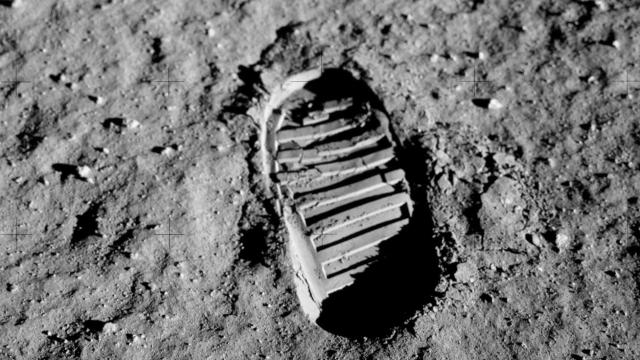Exploring the lunar surface is now a quick click away for desk-bound normals, but there are still some moon mysteries that only those special folks from Apollo missions will ever really experience. Like how it smells. The consensus: spent gunpowder.
In his book Magnificent Desolation: The Long Journey Home from the Moon, Buzz Aldrin described it thusly: “A pungent metallic smell, something like gunpowder, or the smell in the air after a firecracker has gone off,” noting that Neil Armstrong said it was more like “wet ashes.”
Geologist and astronaut Harrison Schmidt landed on the moon during the Apollo 17 mission in December 1972. “All I can say is that everyone’s instant impression of the smell was that of spent gunpowder, not that it was ‘metallic’ or ‘acrid’,” he said. So: possibly metallic, definitely charred.
Why? Nasa says, well, we’re not totally sure.
Smokeless gunpowder and moon dust are made up of totally different stuff. The former is a combustible mix of nitrocellulose and nitroglycerin ; the latter (technical term: regolith) is a mineral-rich mish-mash of teensy tiny silica glass produced in the most awesome possible way — billions of years of meteoroids smashing into the cratered expanse continually melted the topsoil together while blowing it to bitty smithereens. NBD. It’s not flammable, but that was a major concern on Apollo 11.
While even the world’s smartest minds aren’t sure why these two disparate materials are so closely connected, scent-wise, there are a few fascinating theories. ISS astronaut and chemical engineer Don Pettit hasn’t personally touched down on the moon, but he definitely wins for most poetic hypothesis rooted in terrestrial science:
“Picture yourself in a desert on Earth,” he says. “What do you smell? Nothing, until it rains. The air is suddenly filled with sweet, peaty odours. The moon is like a 4-billion-year-old desert. It’s incredibly dry. When moondust comes in contact with moist air in a lunar module, you get the ‘desert rain’ effect — and some lovely odours.”
There’s also a chance that the aroma is the ionic remnants of “solar winds” that leave scant traces of hydrogen and helium in the microscopically jagged particles that are set off, in a way, when they come in contact with the atmosphere inside the craft’s cabin. Maybe it’s chemically active. Perhaps it’s oxidizing. Whatever’s going on, once the particles are back on earth they lose their whiffiness. The guys tried to bring some back in custom-made thermoses, but the sharp-edged flecks actually damaged the seals, exposing the specimens to the outside environment.
So no one can hear you scream up there, and no one can sniff its unique, ammo-esque fragrance down here. Got it. [Nasa Science
; Space.com
; FBI Laboratory Services
; The New Yorker; Magnificent Desolation
]
